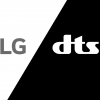 |
 |
|
| Inkjet printers create your own great-looking custom prints at home. | Tiny dye sublimation printers like this offer exceptional portability and picture quality. | Multifunction inkjet printers deliver sharp photos and pages of text, plus they let you scan, copy, and even fax documents. |
Photo printers come in a variety of shapes and sizes, but they all do one thing: they transform your brilliantly colored digital pictures into high-quality photo prints. Thanks to the popularity of digital cameras, most photo printers are now surprisingly affordable and easy-to-use — and many of them don’t even need to be connected to a PC.
Below, we’ve listed some things to consider when shopping for a digital photo printer.
Will it work with your camera?
You can choose a photo printer with a media slot that accepts the same kind of memory card your camera uses, or a printer that connects directly, via a proprietary cable, to your camera. Then you can print photos directly from your camera without using a computer. If you do prefer to use your computer though, simply connect it to your printer via a USB, drop the photos onto your hard drive, edit them as needed, and print them from there.
What printing technology do you prefer?
The two main kinds of technology you’ll see in photo printers are dye sublimation and inkjet. Both can produce stunning images, but there are some key differences between them:
- Dye sublimation printers use heat to vaporize and deposit solid dyes onto the surface of a sheet of glossy photo paper. These dyes permeate the paper’s surface, creating smooth, lifelike gradations of color before returning to a solid form. The printer then applies a special coating to the paper to protect your photos from fading and provide resistance to moisture and fingerprints. Lots of folks prefer dye sublimation printers because they excel at producing realistic colors with even, continuous tones.
- Inkjet printers, on the other hand, “paint” the image onto photo paper with a series of tiny dots using ink from a number of small cartridges. These printers remain popular because of their relatively inexpensive supplies and ability to print photos in a wider variety of sizes than most dye sublimation models. Most inkjet printers are also capable of printing crisp-looking text on plain paper at high rates of speed; many even come as part of a “multifunction” component that can scan, copy and fax your documents.
If you only plan to print a few photos here and there — sending a few to relatives during the holidays, for example — then a dye sublimation printer could be your best choice. If you’ll be printing lots of photos, or want the versatility of printing text documents too, consider an inkjet model. Just remember that a printer optimized for photo printing will do a significantly better job at that than a general-use printer.
How much resolution do you need?
The higher the resolution, the crisper your print. For example, 300 dpi (dots per inch) resolution is finer than a 200 dpi resolution. Today’s dye sublimation photo printers typically offer 300 dpi resolution, while inkjet printers feature 1200 to 9600 dpi. From those numbers, it might sound like inkjet printers will always produce finer-quality prints. But keep in mind that resolution cannot be accurately compared between dye sublimation and inkjet printers — a dye sublimation print made at 300 dpi often looks as nice as a 4800 dpi print made on an inkjet printer.
Other features to consider:
- Portability — Some printers work with optional batteries, so you can take them with you to parties, family reunions, and other get-togethers to print and share your photos on the spot.
- Editing capabilities — Some printers actually let you edit your digital photos, and printers with built-in color LCD screens make this especially easy. These editing capabilities can range from simply adding a time/date stamp or text caption to your photos, to cropping image sizes and performing multiple picture enhancements before printing. The type you choose depends on whether you want to do any editing at all, and if so, whether you’d prefer to do sophisticated edits on a computer, or make quick, simple adjustments from the printer.
- PictBridge direct printing — A common format called PictBridge™ makes it possible for cameras and printers of any brand to work directly with one another by way of a simple USB connection. Using PictBridge, you can connect a compatible camera to a compatible printer and print photos without having to send them through your PC. If your camera has this feature, you may want to look for a printer that offers it as well.
- Print sizes — We generally recommend choosing a printer that can handle at least two different print sizes, such as wallet and 4″ x 6″. Keep in mind that printers capable of making large prints, like 8-1/2″ x 11″, will offer a wide range of smaller prints to choose from as well.
- Cost of paper and ink — Dye sublimation photo printers usually require special paper and ink cartridge kits made specifically for them. This gives you excellent color accuracy and photo print longevity, but the price of these kits often mean a higher per-print cost. If you’re going to be printing a lot of photos, an inkjet printer can sometimes offer less expensive alternatives when it comes to paper and ink options.
- Printing speed — Most dye sublimation photo printers can produce a 4″ x 6″ borderless photo in about one minute. Inkjet printers’ speeds tend to vary quite a bit depending on the number of ink nozzles in the print head and the quality level selected for printing. You can expect speeds that range from as little as roughly 20 seconds to as much as a minute, or more. If you plan on printing a lot of photos, a high-speed inkjet model might make a sensible choice.
- Wireless network printing — Some newer printers feature built-in Wi-Fi®, so multiple users on a wireless PC network can enjoy easy access from anywhere in a home or office. These models can also be hooked up to a wired network via an Ethernet port for shared printing capabilities with connected computers.

by Dave Bar, Crutchfield.com. All rights reserved. (reprinted with permission, originally posted May 19, 2009)






























